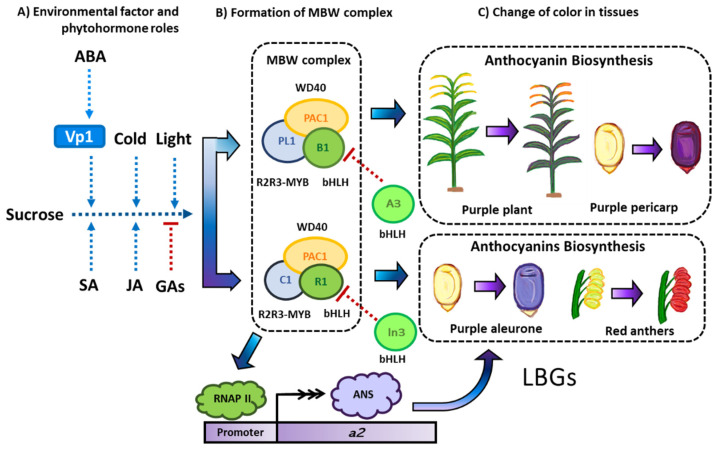Figure 6.
The regulation of the MBW complex and its influence on anthocyanin biosynthesis. (A) Environmental factors such as ultraviolet light (UV) and cold temperatures and phytohormones such as abscisic acid (ABA), salicylic acid (SA), and jasmonic acid (JA) augment the expression of the MBW complex. Meanwhile, the gibberellins (GAs) downregulate the transcription of this tripartite complex. In the case of GAs and ABA, their concentrations participate in seed development. In the seed dormancy period, ABA levels increase and the aleurone starts to accumulate anthocyanins. Mutations in the vp1 gene produce embryos insensitive to ABA, suppressing the anthocyanin biosynthesis in the aleurone and resulting in a viviparous phenotype. (B) The complete MBW is necessary to activate the anthocyanin biosynthetic genes. Some gene products such as A3 and In1 compete with the bHLH member of this transcriptional complex, suppressing the anthocyanin accumulation. (C) The anthocyanin accumulation modifies the color of the plant’s tissues, turning the vegetative tissues, aleurone, and pericarp into a purple color and turning the anthers into a red color.

